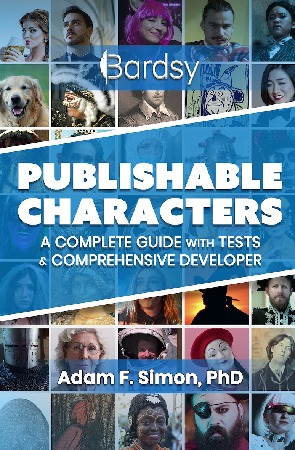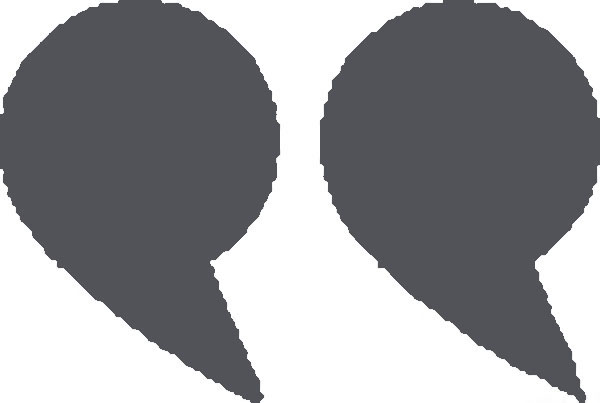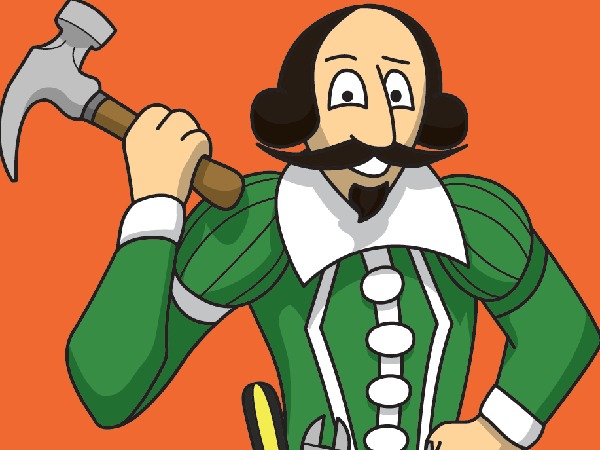😃 Subscribe for Weekly Posts:


Cultural knowledge will wind its way into your characters, mainly through readers extending your details
Is creating a worthy character an impossible task? Of course not! Yet, it takes effort. Unlike actual people, fictional beings are constructed, not born. That said, your readers must relate to them as if they were made of flesh and blood. To jump start this process, Bardsy has developed a three ingredient Character Equation, which our new guide: Publishable Characters: A Complete Guide With Tests & Comprehensive Developer, presents in full.
This equation presents a two-part recipe that will produce an irresistible being, a main character that prompts the deep empathy that turns good novels into great ones. These two parts are finding the ingredients and the second part is blending. Last week's post covered the
first ingredient: Parts of You.
This week's covers the second ingredient: Cultural Universals. This is the reader brings, mostly in the form stereotypes and archetypes. We'll pick up next time with the final major ingredient, Distinctive Referents, after that. Don't forget our Comprehensive Character Developer, which offers a way to build your characters online.
When we tell you to incorporate stereotypes in your story, don't panic! Though the term often comes with negative connotations, there are many upsides to preconceived ideas you can leverage to your advantage. Yes, stereotyping is bad, but readers do it anyway. That's simply how the human mind works: we attach meaning to categories and conjure ideas from just a few words. But that isn't inherently a bad thing.
Stereotypes, Archetypes, and Readers as Your Partners
As a writer, there is an underlying fact that you have to accept. Your writing does not exist in a vacuum. Its experience depends on what readers bring to the table. Think of your readers as creative partners, who co-create a novel's experience. Reading cannot exist without your work, and your work cannot be brought to life without its reader. Thus, every novel is a collaboration. You provide the words and the reader supplies the mental pictures, emotional responses, and sensory detail. They especially fill in unwritten details. The more you understand this partnership, the better you can direct your reader's contributions toward productive details that enhance your story. Stereotypes and archetypes are a powerful means to accomplish just that.

Plan for your readers' contributions, which largely come from stereotypes and archetypes. Stereotyping is problematic, but readers do it anyway

Stereotypes
A stereotype is a fixed idea about what a category member is like. While the word is often associated with disastrous, stereotypes in your writing don't have to be destructive. When you use them intentionally, you guide your reader's mind toward filling details associated with the category. This flood of information provides raw material for the embellishments your reader has to add to what's on the page. As your creative partner, their knowledge will help with the heavy lifting.
Take the firefighter stereotype, for example. You're probably already envisioning a uniformed man with a bright red firetruck, a dalmatian puppy at his side, maybe a fiery inferno blazing behind him. You get the feeling that he is selfless and brave without me having to tell you. In just a few words, we, together, as writer and reader, have just created a character sketch.
And that's the beauty of stereotypes. They activate associations immediately. Readers will embellish your story with details you didn't provide, saving you from a bad case of purple prose, and anchoring your characters in something familiar. The trick is learning to guide and manage those associations so they enrich your characters, rather than flatten them.
The danger, of course, is that not all readers carry the same stereotypes. Culture, age, and personal experience can shape what comes to mind. Misfires can create confusion— or worse, stereotypes that feel offensive or lazy. You must be intentional with your words and be sure to choose which stereotypes to trigger and when, guiding your reader's mental image instead of leaving it to chance.
Archetypes
Archetypes differ from stereotypes. Instead of being a fixed concept, they are based on a recurring concept throughout culture, acting more as a model or a motif than a preconceived notion. Think of archetypes as stereotypes' cousins as they both rely on an activation to tap into the flood of background.

Manage their additions by listing the stereotypes you want to trigger. Check your work by observing where readers take your creations.

If stereotypes are about categories, then archetypes are about roles. What makes archetypes special is their functional role in stories. They're universal patterns of personality that have persisted through a millennium of storytelling. These roles describe how a character approaches life, what motivates them, and how they respond to challenges.
Like stereotypes, archetypes are everywhere. Consider the major arcana cards in a tarot deck. The Devil card may immediately invoke the picture of a horned beast and feelings of temptation, addiction, or darkness. Consider the classes and races in Dungeons & Dragons. An orc barbarian summons the idea of a towering brute with a battle axe upon his shoulder, while an elven druid may bring a much softer, more graceful image. Archetypes give you a ready-made template that readers intuitively understand.
However, archetypes can be overused. Using an archetype without adapting it to your story's context yields cardboard cutouts. Readers expect nuance. They expect something that, well, subverts expectations and brings something fresh to the table. Don't rely on archetypes to flesh out a character for you. Get creative with them and use them as a guide to bring familiarity to your readers while inventing a character with complexity and depth.
Working Together
Stereotypes and archetypes are complementary building blocks for your character. They work with your reader as your creative partner. Rather than resisting stereotypes and archetypes, use them deliberately. They are not your enemy, but your allies. Used well, they don't detract from your characters but enhance them. And when you accept your readers as your co-creators, you'll find they bring more life, detail, and immersion to your story than you could ever manage alone.
Try it to see that taking advantage of these universals is easier than you may expect. Remember, the reader wants and needs to imagine your character in full. Milk this resource as much as you can (carefully, of course).
Use our Comprehensive Character Developer to construct your being online for an extra boost. It produces a downloadable character sheet pdf. Stay tuned for our final character equation ingredient: Distinctive Referents.